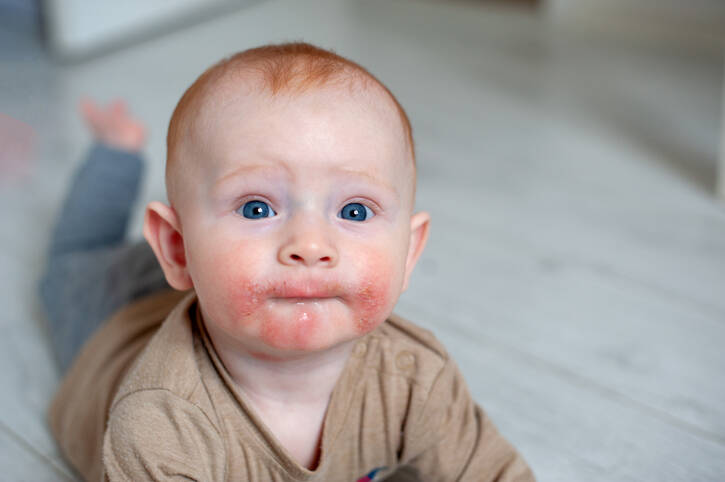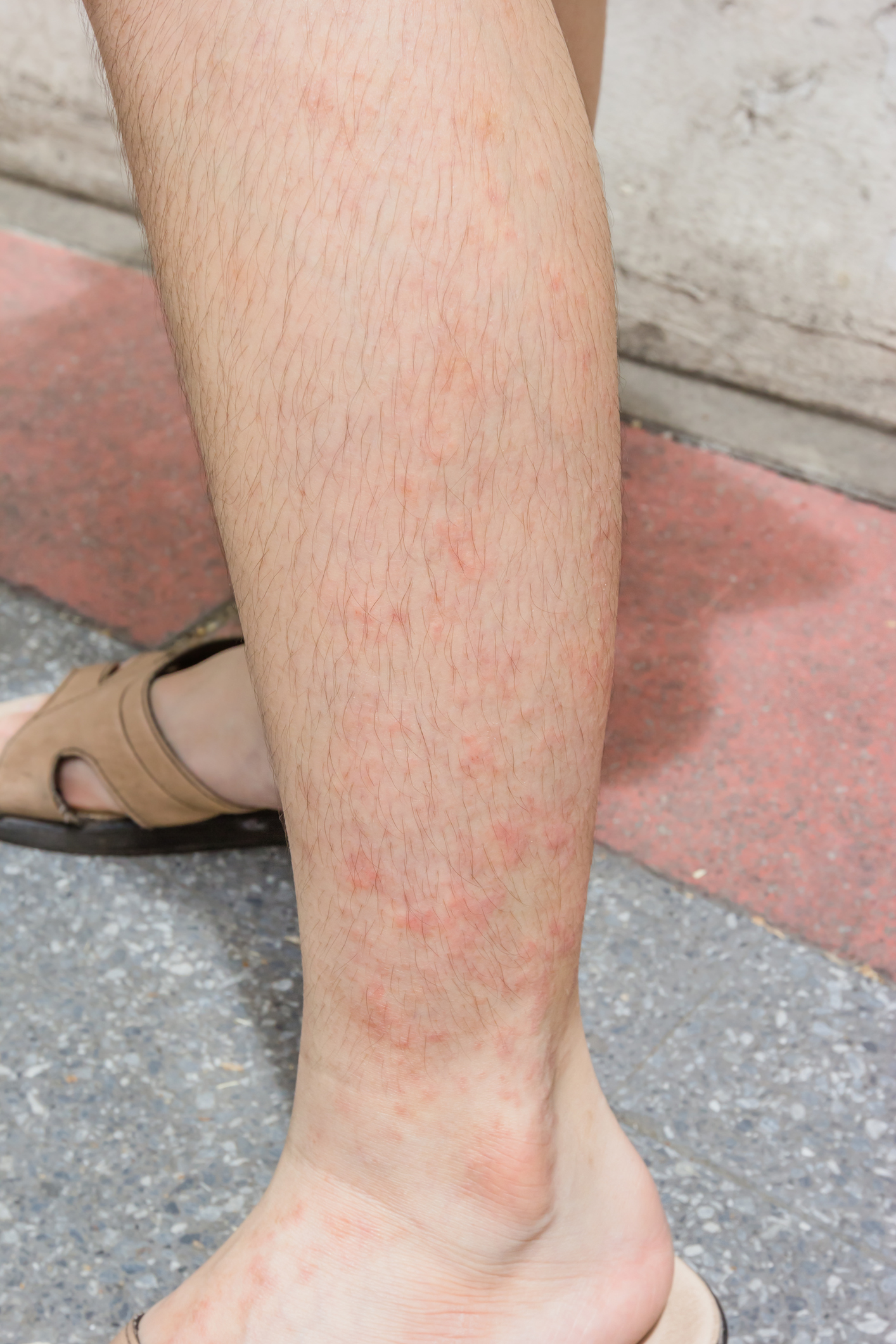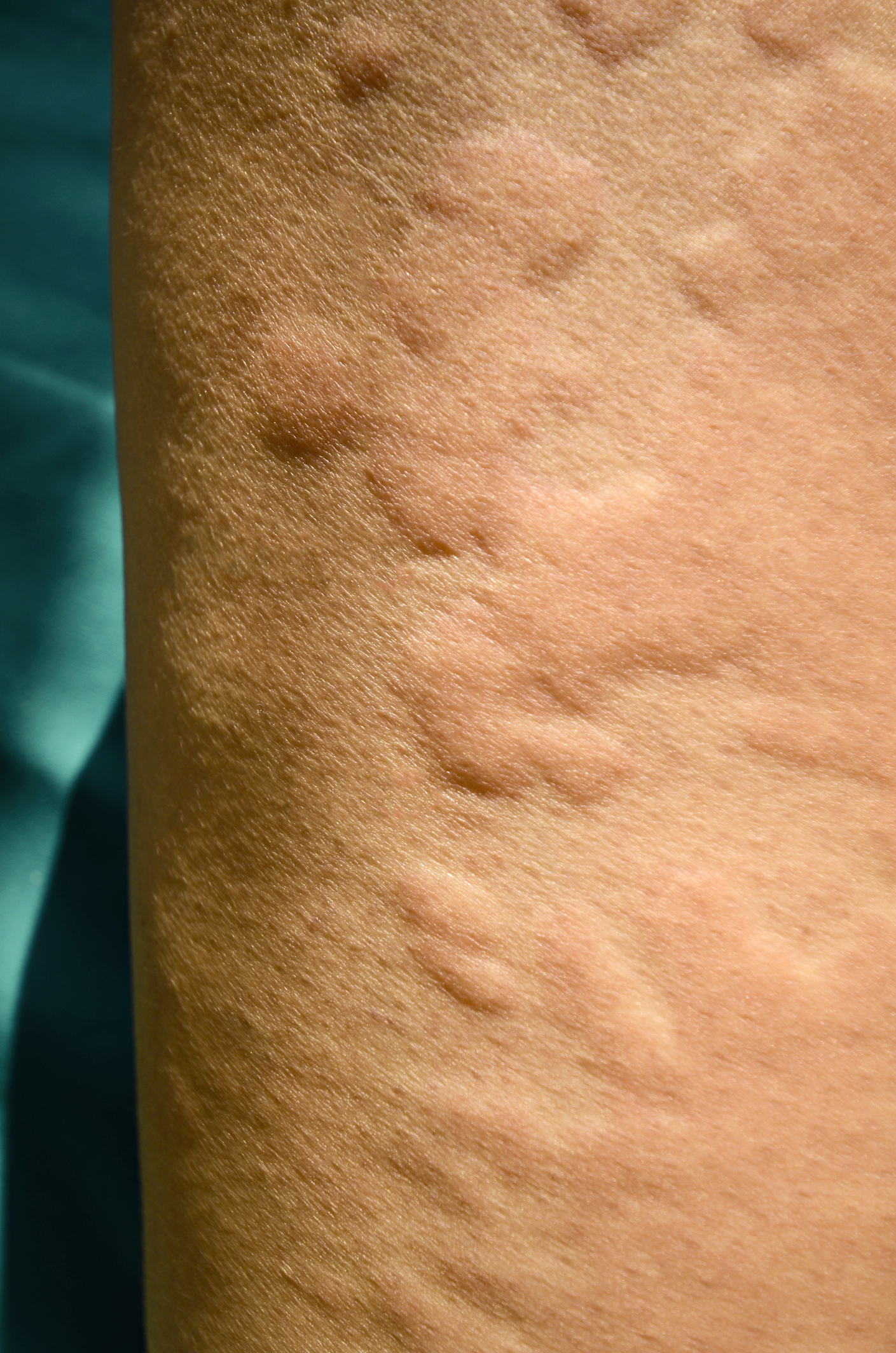Atopic eczema - is your child suffering from it too?

The incidence of eczema is increasing worldwide. The increase is related to the continuous deterioration of environmental conditions, food quality, the use of cosmetics and cleaning products, and environmental dustiness. Eczema is a skin disease that affects different age groups. It is manifested by skin changes and itching.
Article content
Atopic eczema - atopic dermatitis
Atopy means a type of allergic reaction. It includes atopic eczema, asthma and hay fever.
Atopic eczema is a chronic, recurrent inflammatory skin disease that itches significantly. It has typical sites of occurrence on the body. The skin is dry. In addition to unpleasant physical manifestations, it causes psychosocial problems, feelings of inferiority, lower self-esteem, especially during adolescence.
It affects all ages, slightly more so women. It is most common in infancy, affecting up to 15-20% of the child population. As children age, the symptoms diminish until they disappear completely. Only 3-5% of children persist into adulthood.
About 1/3 of those affected also develop asthma or allergic rhinitis. Treatment is long-term.
Factors influencing the development of atopic eczema
- Genetics - plays a large part in the onset. Up to 70% of patients with atopic dermatitis have a family history of atopic disease.
- Immunological response
- Skin barrier defect - There is a reduced fat content in the stratum corneum of the epidermis. This manifests as dry skin through which allergens and irritants can more easily penetrate.
Triggers can be:
- airborne allergens - dust, moulds, mites, bacteria, yeasts, viruses, contact with animals
- food allergens - citrus fruits, cocoa, nuts, cow's milk, eggs, poppy seeds
- mechanical irritation - tight, snug-fitting clothing
- stress
- hormonal changes in women
- influence of the external environment - cold, heat
- lack of sleep
- smoking
Manifestations of atopic eczema
The course of the disease typically varies with age. However, some stages may be absent. Periods of worsening and improvement of the disease alternate.
Stage 1 (atopic eczema in infants) occurs around the 3rd-6th month. It lasts for several months up to 2 years.
The first symptoms appear on the face, redness, blistering, wetting, scabs form. The affected skin itches significantly, the baby scratches, is restless, sleeps badly. The scratched areas can easily become infected.
The manifestations can spread to the whole face, hair, forearms, shins and sometimes even the trunk.
Stage 2 (from infancy to puberty) is characterised by a change in the affected areas. Eczema is most common in the limbs, neck and back of the hands and feet.

The areas are red, blurred, blistered and crusted. The skin is scratchy, with crusts. The nails may even be noticeably shiny from constant scratching.
Lichenification occurs. The skin is markedly thickened with a pronounced relief, especially in the elbow and knee sockets.
In inflammation, skin discolouration is sometimes present, but with time, after the inflammation has subsided, the skin colour is corrected.
Stage 3 (post-pubertal in adults) is characterised by affected areas such as the forehead, eye area, neck, arms, tibiae, chest. There are patches of lichenification. The unaffected skin is noticeably pale. Hair may be thinner as a result of inflammation.
Atopic eczema can cause conjunctival irritation, cataracts with retinal detachment.
Complications are various infections caused by e.g. staphylococcus or herpes.
Treatment of atopic eczema
Diagnosis is made on the basis of personal and family history. The course of the disease is assessed and the skin is examined.
The treatment is complicated and long-term. It consists in observing the principles of eliminating allergens from food, the environment, eliminating stresses. Wearing loose clothing is advisable. It is necessary to learn to observe proper hygiene. It is essential to moisturize and lubricate the skin with oil baths.
In the acute stage of the disease, compresses with a soothing and drying effect, corticosteroid ointments, antibiotics for inflammation and antihistamines against itching are applied.
Other therapeutic procedures are also used, especially phototherapy, spa treatment.
It is advisable to learn to observe what provoked the aggravation of the disease. Thanks to this, the recurrence of the disease can be prevented in the future.
Not all eczema is atopic

Diaper dermatitis
The skin under the diaper is constantly irritated by moisture, heat and therefore easily inflamed.
Redness develops, at first smooth, later the skin becomes rough.
At first the affected area itches, later it hurts, itches. Eczema is localized only in the areas under the diaper, it does not spread.
Contact eczema
Contact eczema is an allergic inflammatory disease of the skin. It develops in a few hours or days in a place that is in contact with an allergen, after repeated contact with the skin, e.g. after using cosmetics, contact with chemicals, metals, pharmaceuticals, plants.
The skin is red, itches, blisters may form.

Seborrheic dermatitis
Affects the skin of the scalp, face and trunk. It occurs in areas rich in sebaceous glands. It is a chronic inflammatory skin disease. In children, it is manifested by yellow scales that adhere firmly to the skin. In adults, the scales are whitish, dry.
They do not usually itch.
Allergic eczema - urticaria
Appears very quickly, spreading to the surrounding area within minutes to hours. Histamine, which is released in an allergic reaction, causes redness. Small pimples form, which rise above the level of the skin, and the area itches intensely.










